预约演示
更新于:2025-09-09

Chulabhorn Research Institute
更新于:2025-09-09
概览
关联
3
项与 Chulabhorn Research Institute 相关的临床试验TCTR20240704011
A randomized, open-label, parallel-group, single-dose comparative pharmacokinetics study of a candidate biosimilar WT-1 Trastuzumab with reference product in healthy male subjects
开始日期2025-09-30 |
TCTR20221104005
Comparative pharmacokinetics of crude powder, aqueous, and ethanolic extracts of Andrographis paniculata in Thai healthy volunteers under fed condition
开始日期2022-11-11 |
TCTR20210326007
Evaluation of safety and efficacy of topical longan cream for pain relief associated with osteoarthritis of knee (symptomatic treatment of pain)
开始日期2021-05-03 |
100 项与 Chulabhorn Research Institute 相关的临床结果
登录后查看更多信息
0 项与 Chulabhorn Research Institute 相关的专利(医药)
登录后查看更多信息
1,247
项与 Chulabhorn Research Institute 相关的文献(医药)2025-12-31·Journal of Oral Microbiology
Interactions between non-
albicans Candida
and
Streptococcus mutans
enhance cariogenic potential of dual-species interkingdom biofilms
Article
作者: Matangkasombut, Oranart ; Samaranayake, Lakshman ; Sansanoa, Wirunphat ; Sangpitak, Metanee ; Thanyasrisung, Panida
Background:
Non-albicans Candida species (NACs) are commonly found in carious lesions, yet their specific role in caries progression remains unclear. Hence, we conducted an in vitro study to explore how NACs interactions with Streptococcus mutans affect cariogenicity.
Materials and Methods:
Dual-species interkingdom biofilms were developed with S.mutans and six Candida species, C.albicans and the NACs: C.dubliniensis, C.glabrata, C.krusei, C.parapsilosis and C.tropicalis. Biofilm mass, viable cell counts, and pH were evaluated in mono- and dual-species biofilms. Quantitative RT-PCR was used to assess the expression of S.mutans genes associated with cariogenicity.
Results:
Co-culturing S.mutans with either C.albicans, C.glabrata, or C.tropicalis significantly increased biofilm mass. While S.mutans numbers either increased or remained stable in dual-species biofilms, C.krusei, C.parapsilosis, and in particular C.tropicalis numbers significantly increased. All dual-species biofilms exhibited a pH below the critical demineralization level of enamel, akin to S.mutans mono-species biofilms. The expression of a battery of cariogenic genes in S.mutans was upregulated, particularly in dual-species biofilms with C.krusei and with C.tropicalis.
Conclusion:
NACs influence the biofilm production and the cariogenic gene expression of S.mutans. The dual-species biofilm of S.mutans and NACs, particularly C.tropicalis, likely possess heightened cariogenic potential. Further research is warranted to unravel these intriguing interactions within interkingdom biofilms.
2025-12-31·PHARMACEUTICAL BIOLOGY
Non-linear oral bioavailability and clinical pharmacokinetics of high-dose
Andrographis paniculata
ethanolic extract: relevant dosage implications for COVID-19 treatment
Article
作者: Rangkadilok, Nuchanart ; Puranajoti, Porranee ; Songvut, Phanit ; Panomvana, Duangchit ; Akanimanee, Jaratluck ; Suriyo, Tawit ; Satayavivad, Jutamaad ; Pholphana, Nanthanit
AIM:
Insufficient quality control and limited dissolution of Andrographis paniculata extract capsules restricts their bioavailability and hinder the clinical use for treating mild coronavirus disease 2019 (COVID-19) patients.
OBJECTIVE:
This study aims to investigate pharmacokinetics and safety of high-dosage A. paniculata ethanolic extract (equivalent to 180 or 360 mg/day of andrographolide), relevant dosages used for mild COVID-19 treatment.
METHODS:
An open-label, single-dose, and repeated-dose conducted in healthy volunteers. Subjects received capsules containing ethanolic extract equivalent to andrographolide dosage of either 60 or 120 mg per dose, taken every eight hours daily (totaling 180 or 360 mg/day). Safety was assessed through blood chemical analysis and adverse event monitoring after 7 days of ethanolic extract administration.
RESULTS:
Pharmacokinetics of ethanolic extract indicated low plasma levels of the major diterpenoids. The maximum plasma concentration (Cmax) of andrographolide did not exhibit a dose-proportional increase, reaching 6.44 and 11.62 µg/L for single and repeated doses of 60 mg/day, respectively. Doubling the dose (120 mg/day) only resulted in slightly higher Cmax (6.97 and 15.03 µg/L for single and repeated doses, respectively). Safety evaluation revealed mild, transient adverse events, but all parameters remained within normal ranges.
CONCLUSIONS:
This study highlights limitations in the pharmacokinetics of the ethanolic extract of A. paniculata. It indicated non-linear proportionality in the oral bioavailability of andrographolide. These findings suggest that current extraction process of ethanolic extract may hinder its effectiveness. Further research is warranted to explore alternative extraction methods or formulation developments that can enhance the bioavailability of andrographolide and its potential therapeutic effects for COVID-19 treatment.
2025-12-01·MOLECULAR BIOLOGY REPORTS
A diagnostic target in the 3’ untranslated region of hepatitis C virus genome
Article
作者: Kiattanaphon, Anusorn ; Sistayanarain, Anchalee ; Chujan, Suthipong ; Ampoot, Weenassarin
INTRODUCTION:
Hepatitis C virus (HCV) causes hepatitis worldwide. Detection of HCV infection is important for diagnosis and treatment. The most frequently used method for diagnosis is the detection of the 5' untranslated (5' UTR) conserved target using polymerase chain reaction (PCR). Unfortunately, the detection of the 5'UTR is not completely reliable. The 5'UTR may not be the best target for nucleic acid detection because of its complex secondary structures and the variations of different HCV strains. An alternative target is the 3'UTR. The purpose is to evaluate the diagnostic potential of the 3'UTR of HCV.
METHODS AND RESULTS:
RNA was extracted from sixty-three serum samples. The 3'UTR and 5'UTR were amplified. Within the fifty-nine anti-HCV-positive samples, targeting the HCV 3'UTR and 5'UTR resulted in amplification in 40 (67.8%) and 54 (91.5%) of the samples, respectively. Five samples that were not amplified by 5'UTR detection were found positive by 3'UTR detection.
CONCLUSION:
These results indicate that PCR detection of the HCV 3'UTR appears less effective than detection of the 5'UTR. Nevertheless, the detection of several regions of the HCV genome by multiplex PCR may improve the accuracy of HCV detection.
2
项与 Chulabhorn Research Institute 相关的新闻(医药)2025-02-22
点击上方蓝字 关注我们
编者按:INAVO120研究数据自2024年10月在《新英格兰医学杂志》(NEJM)发表以来,引发了广泛关注。基于该研究数据,美国食品药品监督管理局(FDA)已经获批Inavolisib(伊那利塞)联合哌柏西利+氟维司群用于治疗在辅助内分泌治疗期间或完成后复发后的内分泌治疗耐药、PIK3CA突变的HR+/HER2-的局部晚期或转移性乳腺癌成人患者。2025年1月16日,NEJM再度刊发INAVO120研究读者来信与作者回信,就该研究患者入组情况进行深入探讨。读者来信指出研究中黑人和西班牙裔患者比例过低的问题,而作者回信则对此作出回应,并承诺将在后续研究中关注并解决多样性问题。本文将对INAVO120研究及其后续讨论进行全面回顾与解读,以期为读者提供更为全面的研究视角与临床启示。
研究简介
研究背景
伊那利塞是磷脂酰肌醇3-激酶复合物(由PIK3CA编码)中p110催化亚基α亚型的强效和选择性抑制剂,该复合物也可促进突变的p110α的降解。Inavolisib联合哌柏西利+氟维司群在临床前模型中显示出协同活性,在早期试验中显示出有前景的抗肿瘤活性。
研究方法
在3期、双盲、随机的INAVO120研究中,纳入了辅助内分泌治疗完成后12个月内或12个月内复发的PIK3CA突变、HR+/HER2-局部晚期或转移性乳腺癌患者,比较了伊那利塞(口服剂量为每日1次,每次9 mg)+哌柏西利+氟维司群一线治疗(伊那利塞组)和安慰剂+哌柏西利+氟维司群一线治疗(安慰剂组)的疗效和安全性。主要终点是研究者判定的无进展生存期(PFS)。
研究结果
共161例患者被分配至伊那利塞组,164例被分配至安慰剂组。中位随访时间分别为21.3个月和21.5个月。两个试验组的基线特征平衡(表1)。患者中位年龄为54.0岁,60.0%的患者已绝经。总体而言,患者疾病负担较重:51.4%的患者至少有3个器官转移,80.0%有内脏转移,51.7%有肝转移。大多数患者既往接受过新辅助或辅助化疗(82.8%),且既往未接受过CDK4/6抑制剂治疗(98.8%),47.7%的患者既往仅接受过新辅助或他莫昔芬辅助治疗。各组的相关危险因素分布均衡。黑人或非裔美国患者的代表性不足。
表1. INAVO120研究中患者的基线人口统计学和临床特征
疗效
伊那利塞组和安慰剂组的中位PFS分别为15.0个月(95% CI:11.3~20.5)和7.3个月(95% CI:5.6~9.3)[疾病进展或死亡的风险比(HR),0.43;95% CI:0.32~0.59;P<0.001]。(图1.A)。
△图1. INAVO120研究患者的PFS结果
在生存分析中,伊那利塞组6个月的PFS率为82.9%,12个月为55.9%,18个月为46.2%;而安慰剂组分别为55.9%、32.6%和21.1%。PFS分析显示,各关键亚组(包括根据有无内脏转移和有无肝转移定义的亚组)的治疗效果总体一致,尽管某些亚组的患者数量较少(图1B)。在65岁以上的患者以及既往接受过芳香化酶抑制剂和他莫昔芬治疗的患者中,伊那利塞+氟维司群+哌柏西利相比安慰剂+哌柏西利+氟维司群似乎改善效果有限,但这些亚组的患者数量也较少。作为敏感性分析,研究者还通过盲态独立中央审查评估了PFS,结果与研究者评估的PFS结果一致(疾病进展或死亡的分层风险比,0.50;95% CI:0.36~0.68;P<0.001)。
总生存(OS)分析显示,伊那利塞组6个月、12个月和18个月的OS率分别为97.3%、85.9%和73.7%,而安慰剂组对应的OS分别为89.9%、74.9%和67.5%。死亡分层风险比(伊那利塞 vs 安慰剂)为0.64(95%CI:0.43~0.97;P=0.03,未跨过预设的显著性界值P<0.0098)(图2)。
△图2. INAVO120研究中患者的OS
伊那利塞组58.4%的患者和安慰剂组25.0%的患者达到了客观缓解(差异为33.4%;95% CI:23.3~43.5)。中位缓解持续时间(DOR)分别为18.4个月和9.6个月(HR 0.57;95% CI:0.33 ~0.99)(图3)。
△INAVO120研究中客观缓解时间和中位缓解持续时间
安全性
在安全性分析人群中,伊那利塞组98.8%的患者和安慰剂组100%的患者发生了至少1起不良事件(AE)。两组中至少有20%患者发生的任何级别选定不良事件包括中性粒细胞减少(inavolisib组88.9%的患者发生,安慰剂组90.7%的患者发生)、口腔炎或黏膜炎(分别为51.2%和26.5%)、高血糖(分别为58.6%和8.6%)、腹泻(分别为48.1%和16.0%)以及皮疹(分别为25.3%和17.3%)(表2)。伊那利塞组和安慰剂组的3/4级中性粒细胞减少发生率分别为80.2%和78.4%。3/4级高血糖分别为5.6%和0%;3/4级口腔或黏膜炎5.6%和0%;3/4级腹泻分别为3.7%和0%。未观察到3/4级皮疹。伊那利塞组6.8%的患者和安慰剂组0.6%的患者因不良事件停用任何试验药物。
表2. INAVO120研究中的不良事件
讨论
研究达到了主要终点,表明在辅助内分泌治疗完成后12个月内或12个月内复发的PIK3CA突变的HR+/HER2-局部晚期或转移性乳腺癌患者中,与安慰剂+哌柏西利+氟维司群相比,伊那利塞+哌柏西利+氟维司群显著延长了PFS。在所有预设的关键临床亚组和敏感性分析中,均观察到了伊那利塞的获益,并且次要终点分析也支持这一获益。OS分析也显示,伊那利塞方案的数值趋势较好,随访正在进行中。伊那利塞治疗组安全性与方案中各药物的安全性一致,并且因不良事件而停用伊那利塞方案中任何药物的患者百分比低。
该研究纳入了对内分泌治疗耐药且有可测量疾病的患者,这些导致患者疾病负担较重,包括至少3个器官转移(51.4%)、内脏疾病(80.0%)和肝转移(51.7%)。此外,本研究的一个独特之处在于,90%以上患者的肿瘤PIK3CA突变状态是通过ctDNA的检测确定。在入组人群中,安慰剂组PFS显著短于伊那利塞组,这反映了一些不良预后因素,并突显了伊那利塞+哌柏西利+氟维司群带来的改善。
该研究中观察到的显著临床获益可归因于同时阻断了驱动PIK3CA突变、HR+/HER2-局部晚期或转移性乳腺癌的三条关键信号通路(PI3K、雌激素受体和CDK4/6通路),从而延迟和防止了主要由这些通路之间的交互作用指导的治疗耐药的出现。此外,如第一次肿瘤评估时和整个随访期间PFS的KM曲线分离所示,伊那利塞方案的临床获益发生在治疗开始后早期,并且持久。生存分析表明,截至6个月时,安慰剂组和inavolisib组的死亡率分别为10.1%和2.7%,这强调了将伊那利塞+哌柏西利+氟维司群作为一线治疗用于这一患者人群的重要性。
研究表明,伊那利塞联合CDK4/6抑制剂+内分泌治疗具有可接受的安全性水平和副作用。伊那利塞组发生高血糖的患者比例高于安慰剂组,BMI≥30.0的患者高血糖发生率略高于BMI<30.0的患者。这两项发现均可归因于高血糖是与PI3K通路抑制剂相关的靶毒性作用。与PI3K抑制剂相关的其他不良事件(即腹泻、口腔炎和皮疹)的发生率在伊那利塞组中也较高,但通过支持性治疗和剂量调整,高血糖、腹泻、口腔炎和皮疹得到了控制。该研究未报告3/4级皮疹、3/4级肺炎或结肠炎,在伊那利塞组和安慰剂组中,中性粒细胞减少(包括3/4级事件)的发生率相似,每组均有一小部分患者发生发热性中性粒细胞减少。
该研究有以下局限性。首先,研究设计仅评估了目前被批准用于治疗HR+/HER2-晚期或转移性乳腺癌的三种CDK4/6抑制剂(哌柏西利)中的一种应用。然而,在研究过程中,医学界的偏好和国际指南对使用一种或多种特定CDK4/6抑制剂的建议发生了变化。其次,考虑到患者招募主要发生在辅助CDK4/6抑制剂上市之前,因此既往接受过辅助CDK4/6抑制剂治疗的患者很少。既往使用CDK4/6抑制剂作为辅助治疗是否会损害CDK4/6抑制剂作为晚期乳腺癌治疗组成部分的疗效仍有待观察。第三,需要持续治疗的1/2型糖尿病患者被排除。因此,未来评估该人群获益-风险特征的研究将很有必要。第四,患者之间的多样性有限,尤其是黑人或非洲裔美国患者的百分比。大多数患者是在Covid-19大流行期间纳入的,这影响了总体纳入工作,并可能导致多样性有限。
研究结论
在PIK3CA突变、HR+/HER2-局部晚期或转移性乳腺癌患者中,与安慰剂+哌柏西利+氟维司群相比,伊那利塞+哌柏西利+氟维司群显著延长了PFS,因不良事件停止治疗的患者百分比较低(但伊那利塞组的一些毒性作用发生率略高于安慰剂组)。伊那利塞+哌柏西利+氟维司群可能是这些患者的新治疗方案。
读者来信及作者回复
VK Gadi 博士
(通信作者)
致编辑:Turner等人(2024年10月31日)[1]报道称,在HR+/HER2-携带PIK3CA突变的局部晚期或转移性乳腺癌患者中,将伊那利塞添加到哌柏西利+氟维司群的标准治疗组合中作为一线治疗,可延长患者的PFS,这一发现支持了美国食品药品监督管理局(FDA)最近对该药物的批准。我们希望强调该研究的一个重要问题:黑人或非裔美国女性的比例很低(0.6%),并且未报告西班牙裔女性参与该试验。黑人女性的年龄校正乳腺癌死亡率比非西班牙裔白人女性高约40%[2]。晚期乳腺癌PIK3CA-mTOR通路的真实世界数据表明,黑人女性发生血糖并发症的可能性是白种人女性的两倍[3]。此外,在联合治疗的背景下,具有与生殖细胞系Duffy等位基因丢失相关的西非遗传血统的黑人女性也可能因哌柏西利而出现恶化的中性粒细胞减少,这可能导致进一步的伤害[4]。此外,研究的地理重点通常排除了大量黑人人口的地区,例如非洲大陆内的地区,这加剧了这一问题。解决这些差距对于确保公平的卫生保健结果至关重要。
Nicholas C. Turner 博士
作者回复:我们赞同Ibraheem等人的观察结果,即INAVO120研究中黑人或非裔美国人患者比例不足。我们还在文章的讨论部分强调,种族多样性是本研究的一个局限性。我们想澄清的是,在我们的研究中被纳入研究的6.2%的参与者为西班牙裔或拉丁裔。INAVO120试验中有限的多样性是可能影响黑人或非洲裔美国人患者、西班牙裔或拉丁裔患者参与试验的因素。这些因素包括严格的糖化血红蛋白水平纳入标准和Covid-19大流行的影响[5],研究观察到黑人和西班牙裔人群的糖化血红蛋白水平高于白人人群[6]。
我们一致认为,纳入代表性不足的群体对于全面评估基于伊那利塞的治疗方案(伊那利塞+哌柏西利+氟维司群)的获益-风险特征至关重要。我们计划继续加强肿瘤学界与制药行业之间的紧密合作,以解决这一重要问题,其中包括做出上市后承诺,分析不同种族群体在接受基于伊那利塞治疗方案时可能存在的差异。
▌参考文献:
[1]. Turner NC, Im S-A, Saura C, et al. Inavolisib-based therapy -mutated advanced breast cancer. N Engl J Med 2024;391:1584-96.
[2]. DeSantis CE, Ma J, Gaudet MM, et al. Breast cancer statistics, 2019. CA Cancer J Clin 2019;69:438-51.
[3]. Sathe C, Accordino MK, DeStephano D, Shah M, Wright JD,Hershman DL. Disparities in PI3K/mTOR inhibitor use, toxicities,and outcomes among patients with metastatic breast cancer.
Breast Cancer Res Treat 2024;206:519-26.4.
[4]. Lynce F, Blackburn MJ, Zhuo R, et al. Hematologic safety of palbociclib in combination with endocrine therapy in patients with benign ethnic neutropenia and advanced breast cancer. Cancer 2021;127:3622-30.
[5]. Fasano GA, Bayard S, Bea VJ. Breast cancer disparitiesand the COVlD-19 pandemic. Curr Breast Cancer Rep 2022;14:192-8.
[6]. Cavagnolli G, Pimentel AL, Freitas PAC, Gross JL, CamargoJL. Effect of ethnicity on HbA1c levels in individuals withoutdiabetes: systematic review and meta-analysis. PLoS One 2017;12(2):e0171315.
(来源:《肿瘤瞭望》编辑部)
声 明
凡署名原创的文章版权属《肿瘤瞭望》所有,欢迎分享、转载。本文仅供医疗卫生专业人士了解最新医药资讯参考使用,不代表本平台观点。该等信息不能以任何方式取代专业的医疗指导,也不应被视为诊疗建议,如果该信息被用于资讯以外的目的,本站及作者不承担相关责任。
临床3期临床结果临床成功申请上市
2023-02-20
Ascom has been chosen to provide its clinical communications and collaboration solutions to a new medical facility run by the Chulabhorn Hospital in Thailand.
Through its Thai partner Xovic, Ascom will deliver an IT ecosystem at the 449-bed Bhadra Maha Rajanusorn Medical Centre, including its mobility devices, a software suite, the Telligence nurse call system, and integration with third-party vendors.
The new hospital started operating its emergency department on 9 January.
WHY IT MATTERS
As part of its digitalisation journey, Chulabhorn Hospital is setting up a digital hospital that has all health data collected from physical devices interfaced with its HIS. It also seeks to use health and hospital information, along with modern technologies, to allow its staff to focus on care, as well as harness data for research.
In this regard, Ascom was chosen as its platform enables access, sharing, and tracking of information across the clinical team. Chulabhorn Hospital expects that Ascom's suite of clinical solutions will "provide a new experience" to patients at the new Bhadra Maha Rajanusorn Medical Centre.
The Ascom Digistat software, for example, will enable clinical decision support, medical device integration, and alarm management. Additionally, the Ascom Unite software is expected to facilitate communication and collaboration among team members through RTLS and EMR.
THE LARGER TREND
Ascom continues its expansion across Asia with this latest contract win. Last year, it was tapped by
Mahsa University
in Malaysia to install the Digistat and Unite systems at its upcoming 400-bed specialist hospital.
The health IT provider was also able to bag a
multi-million dollar contract
to deploy the Telligence nurse call system at an unnamed hospital in Macao. It was also contracted to deliver the same nurse call system to two
Mayapada Healthcare
hospitals in Indonesia.
ON THE RECORD
"The deployment at Bhadra Maha Rajanusorn Medical Centre reinforces the power of Ascom Clinical and Collaboration solution enabling clinicians to make informed data-driven decisions," commented Siao-Loon Then, head of sales at Ascom Asia.
100 项与 Chulabhorn Research Institute 相关的药物交易
登录后查看更多信息
100 项与 Chulabhorn Research Institute 相关的转化医学
登录后查看更多信息
组织架构
使用我们的机构树数据加速您的研究。
登录
或
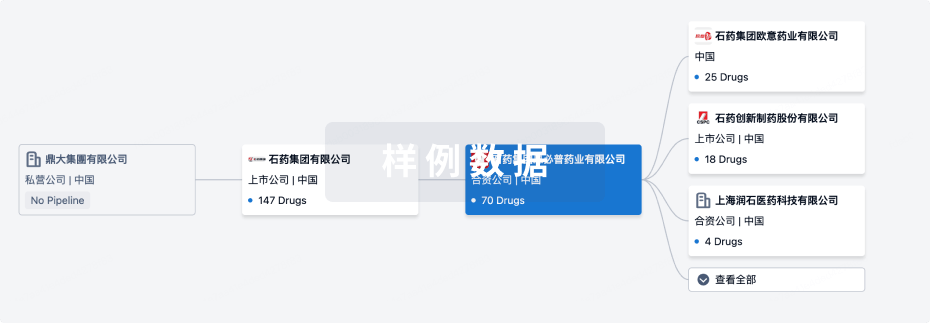
管线布局
2025年10月21日管线快照
无数据报导
登录后保持更新
药物交易
使用我们的药物交易数据加速您的研究。
登录
或
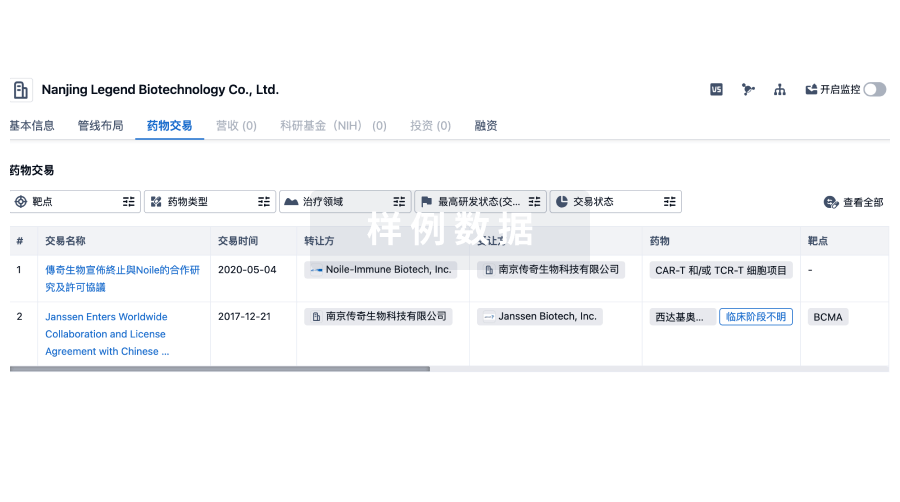
转化医学
使用我们的转化医学数据加速您的研究。
登录
或

营收
使用 Synapse 探索超过 36 万个组织的财务状况。
登录
或
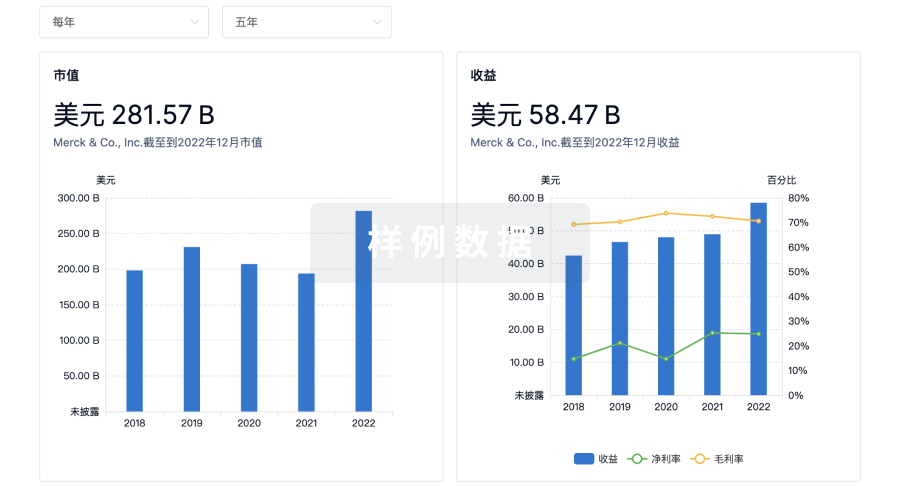
科研基金(NIH)
访问超过 200 万项资助和基金信息,以提升您的研究之旅。
登录
或

投资
深入了解从初创企业到成熟企业的最新公司投资动态。
登录
或
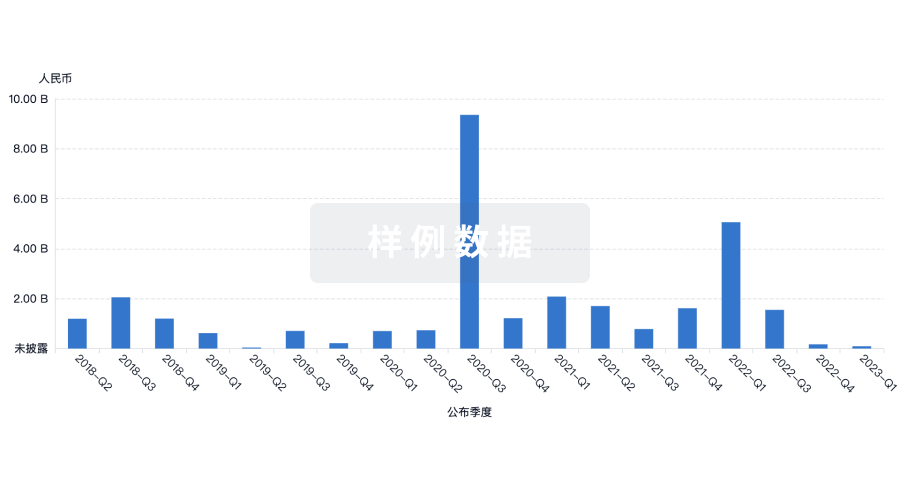
融资
发掘融资趋势以验证和推进您的投资机会。
登录
或
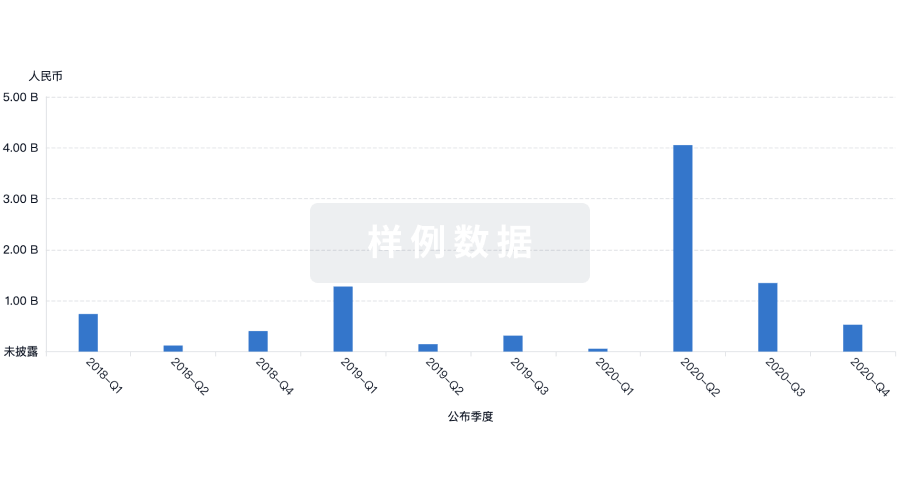
Eureka LS:
全新生物医药AI Agent 覆盖科研全链路,让突破性发现快人一步
立即开始免费试用!
智慧芽新药情报库是智慧芽专为生命科学人士构建的基于AI的创新药情报平台,助您全方位提升您的研发与决策效率。
立即开始数据试用!
智慧芽新药库数据也通过智慧芽数据服务平台,以API或者数据包形式对外开放,助您更加充分利用智慧芽新药情报信息。
生物序列数据库
生物药研发创新
免费使用
化学结构数据库
小分子化药研发创新
免费使用